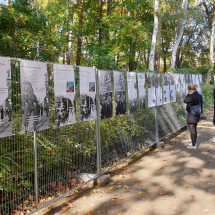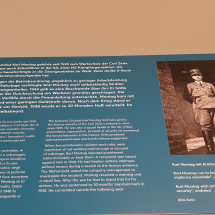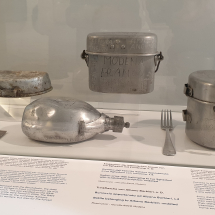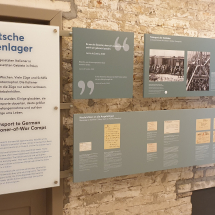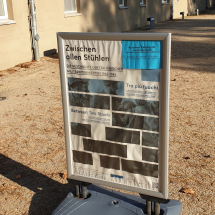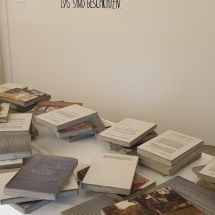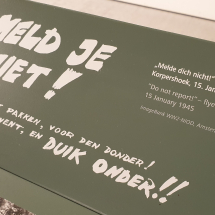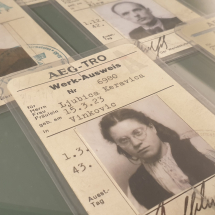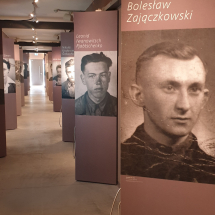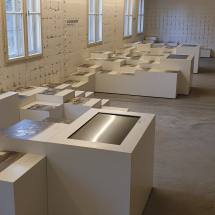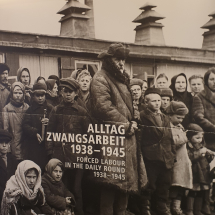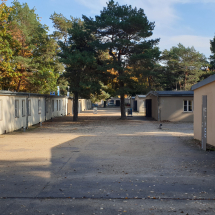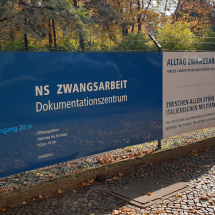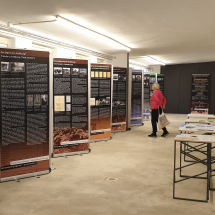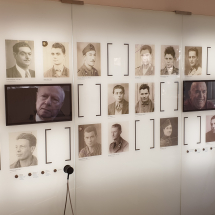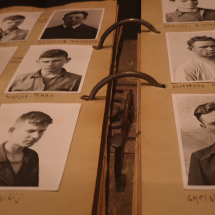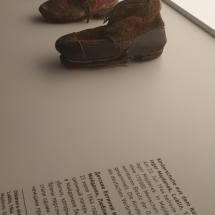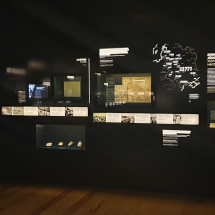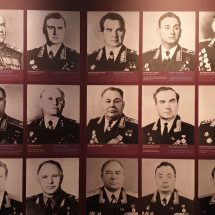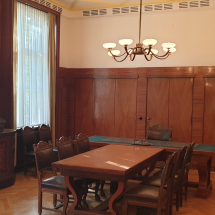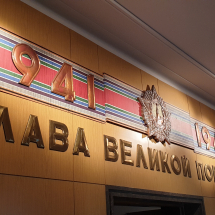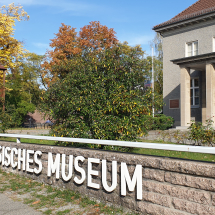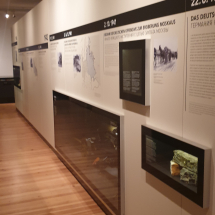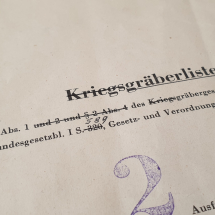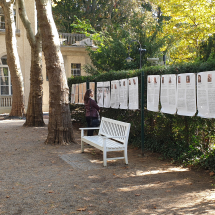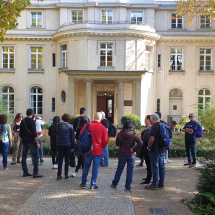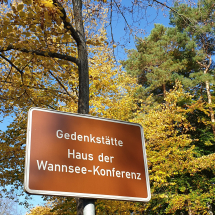As part of further historical research, we had scheduled several appointments from 14 to 16 October in Berlin.
In the Senate Department Berlin, Graves Service, we were able to clarify some of our questions based on the archive material and discussions with the staff. As in many other archives and institutions, the topic of “REIMAHG”, the Walpersberg and forced labor was unknown. We were able to answer all their questions and handed over our book “REIMAHG”, History in pictures”, which was integrated into the archives with gratitude. As the staff was very interested in our work regarding forced labor, they plan to be present next year in Kahla for the commemorations.
Our next appointment was the NS forced labor Documentation Centre in Schöneweide. An estimated 26 million people were deported during the Second World War and exploited as forced laborers.
The Documentation Centre NS Forced Labor informs strongly and comprehensively about the history and dimension of Nazi forced labor. The former housing barracks on the site are the only surviving one of the Nazi forced labor camps. Today they serve as exhibition and event locations.
In addition, visitors will find an archive, a library, an international youth meeting center and numerous offers towards historical and political education. We spoke for a long time with the curator of the historically very well prepared exhibition. Equally, the history of the “REIMAHG” and the forced laborers used there was just as new as it was for all our conversation partners on this day. The book “REIMAHG”, History in Pictures”, was also very well received here.
Also on our list was a visit to the “House of the Wannsee Conference”. In today’s memorial, a former factory villa from 1915, on January 20, 1942 fifteen senior representatives of the SS, the NSDAP and various Reich ministries met to discuss cooperation in the planned deportation and murder of European Jews.
In addition to an informative outdoor exhibition, the impressive memorial also offers a variety of educational opportunities dealing with the history of the persecution and murder of European Jews and the history of National Socialism.
Our last visit was to the German-Russian Museum in Karlshorst. Here a permanent exhibition documents the historical outline of the unconditional surrender and brought an end to the Second World War in Europe. On May 8, 1945, the High Command of the German Wehrmacht signed the unconditional surrender before the representatives of the four Allies. From 1945 to 1949, the building served as the seat of the Soviet Military Administration in Germany. After various uses by the Soviet military in 1967 the “historical memorial – The Museum of Soviet Armed Forces in Germany” opened in 1986, which was renamed “Museum of Unconditional Surrender of Fascist Germany in the Great Patriotic War” and existed until 1994. In 1994, with the final withdrawal of Russian troops, the association “Museum Berlin-Karlshorst” e.V. was founded and on 10 May 1995 on the occasion of the 50th anniversary of the end of the war in Europe, the German-Russian Museum Berlin-Karlshorst was opened.
Our stay in Berlin was very intensive, but we received great support and recognition for our work everywhere and found new friendships in the numerous discussions.
